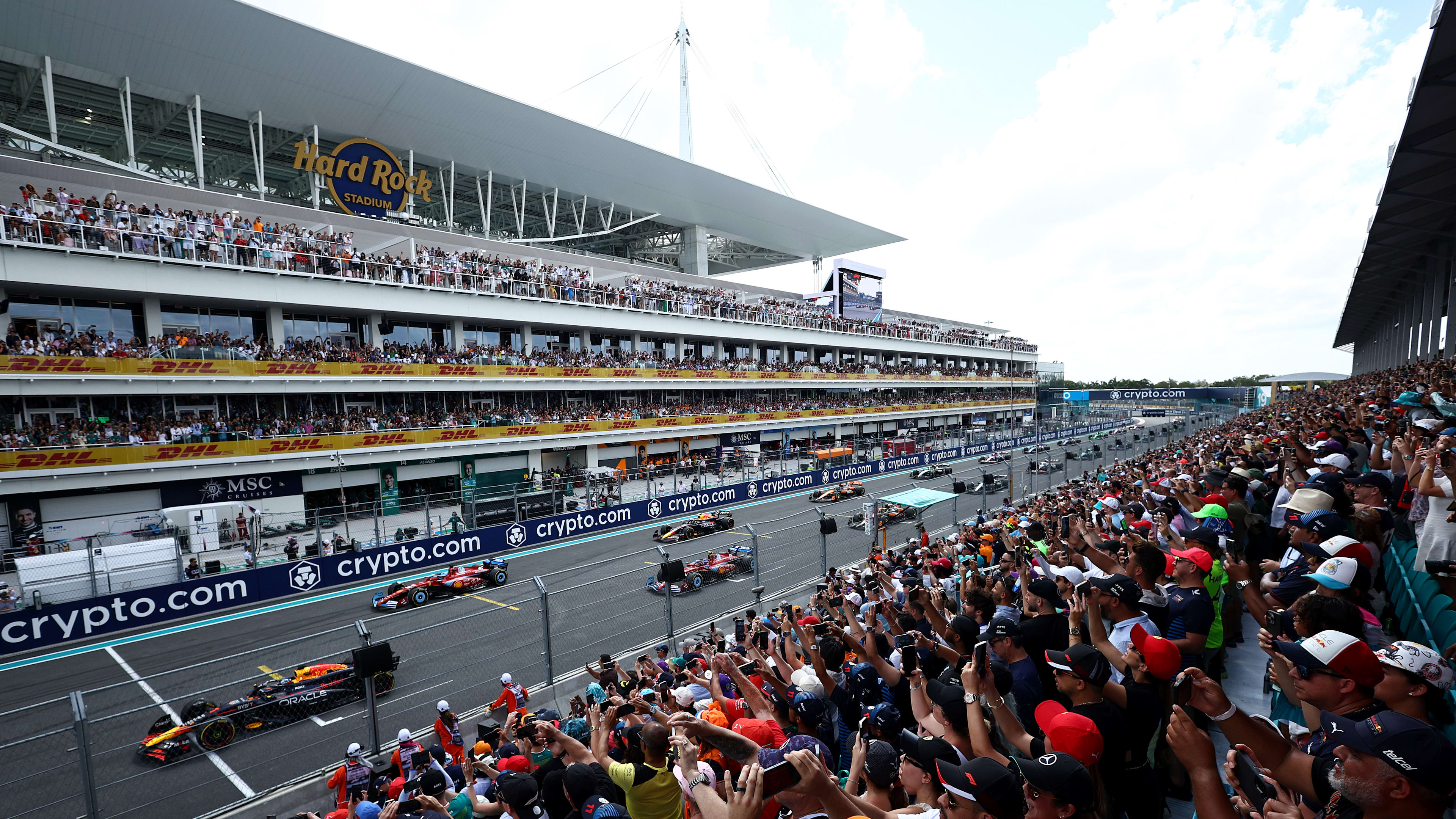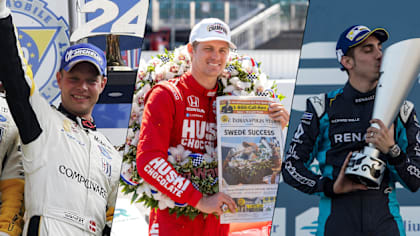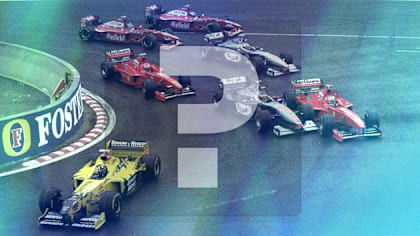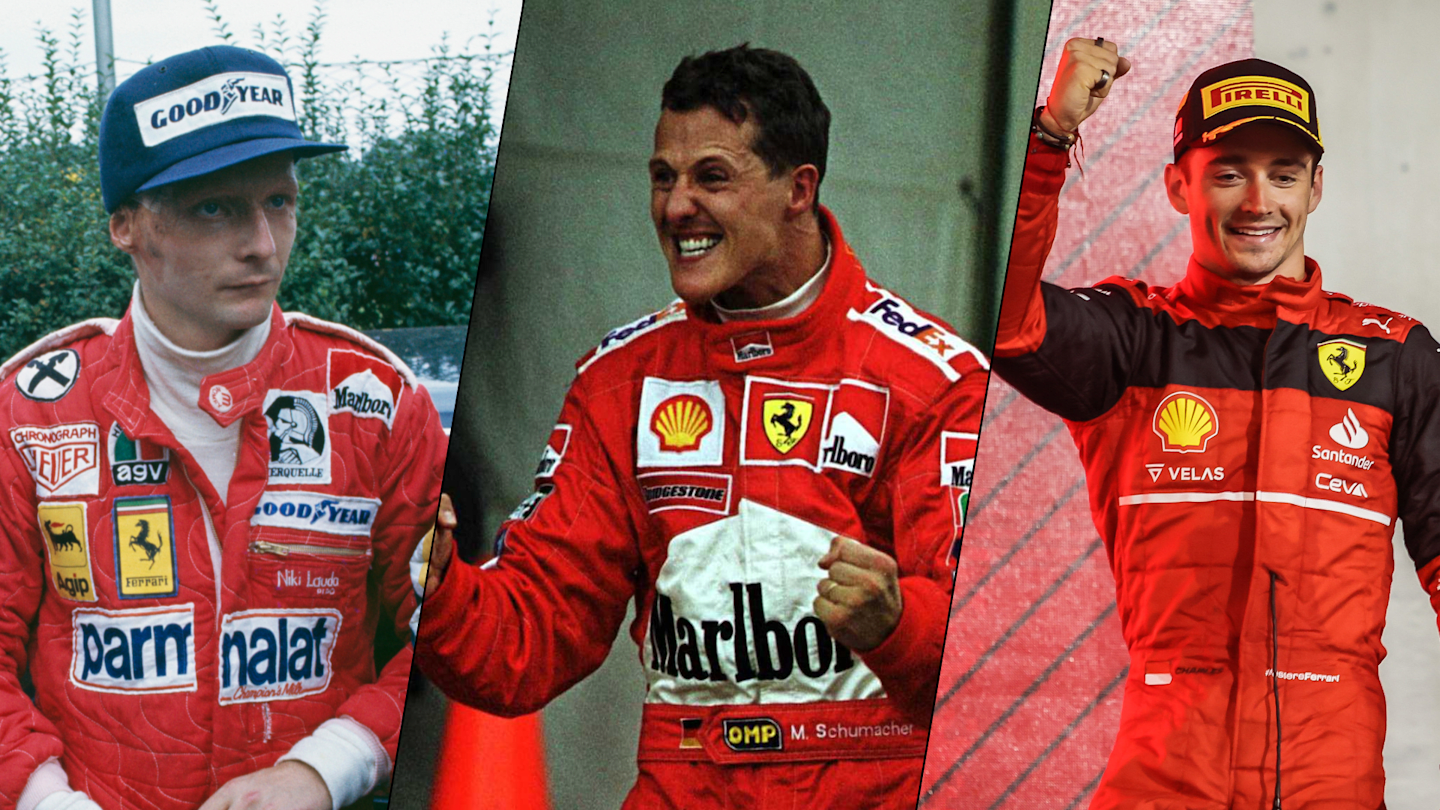
Feature
Unlikely wins, heroic comebacks and iconic championship victories – The 10 greatest Ferrari moments as they mark 10,000 points
Share

Ferrari is used to setting records in Formula 1, but largely unnoticed the Scuderia reached a new landmark in the 2024 Belgian Grand Prix. Charles Leclerc finished third, with Carlos Sainz sixth, making it the first constructor to score 10,000 points in world championship history.
It was already comfortably clear of second-best Red Bull, which has scored 7656 points having only come into F1 in 2005 – five-and-a-half decades after Ferrari – but it’s a remarkable tally that’s a reminder of Ferrari’s uniquely-enduring contribution to Grand Prix racing.
To celebrate the achievement, we’ve picked out the 10 greatest moments for Ferrari.
10. Ending the drought – 1994 German Grand Prix
Ferrari has endured some barren spells in F1, but the most arid of all came between Alain Prost’s victory in the 1990 Spanish Grand Prix and Gerhard Berger’s famous win at Hockenheim in 1994. That ended a run of 58 winless races and included particularly painful years in 1992 and ’93.
The victory is doubly significant as a waypoint in the underachieving team’s recovery plan. Jean Todt, architect of Peugeot’s sportscar supremacy, took the helm at Ferrari a year earlier and there were signs he was having an impact with the Ferrari 412 T1’s strong performances early in the season. And at ultra-fast Hockenheim, where the powerful V12 did its magic and Berger always flew, it dominated.
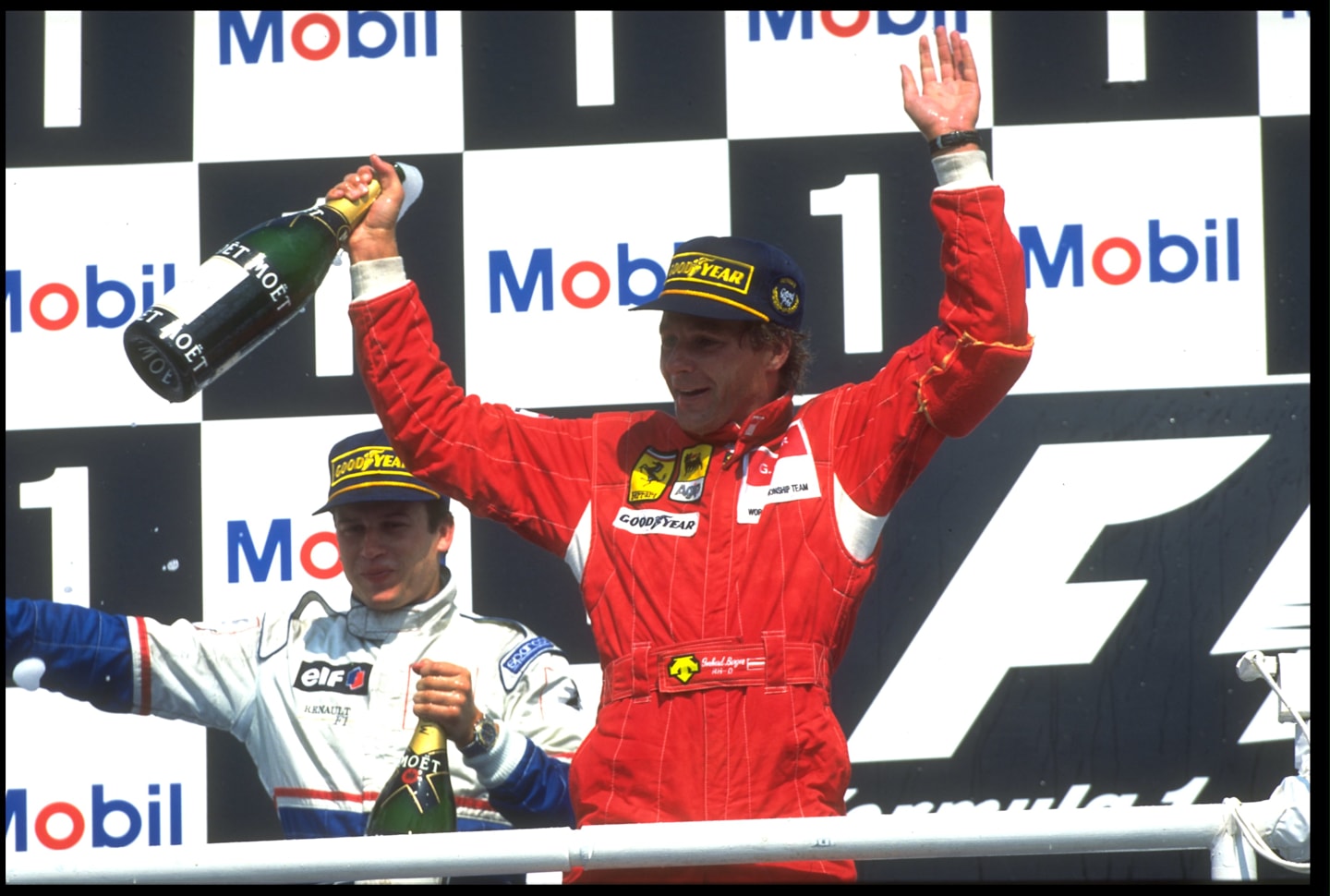
Gerhard Berger celebrates winning the 1994 German Grand Prix, ending a run of 58 winless races for Ferrari
Berger and Jean Alesi locked out the front row and escaped the dual start accidents that wiped out 10 cars. However, Alesi didn’t complete the first lap as he suffered an electrical failure, meaning it was all on Berger.
He was chased by Michael Schumacher’s Benetton, but there were big question marks about how quick his pitstop would be given the aftermath of team-mate Jos Verstappen’s famous pitlane fire. An engine failure rendered that moot. Berger went on to win by almost a minute from the Ligiers of Olivier Panis and Eric Bernard.
9. A fresh start – 2022 Bahrain Grand Prix
Ferrari headed into the new ground-effect regulations era in 2022 after toiling through two seasons of recovery. This followed changes to its power unit thanks to an agreement to collaborate with the FIA on tightening the engine regulations after suspicions, which it must be stressed were never proved, by the rulemakers that Ferrari was at times running outside of what was allowed.
After a dismal 2020, ’21 was better but Ferrari hadn’t won for two seasons heading into the new rules. So when Charles Leclerc took pole position then held off Max Verstappen in a wheel-to-wheel fight to take victory in the Bahrain season-opener it was a glorious moment for Ferrari, followed up by a second win in the third race of the season in Australia, promising a first world championship since 2008 was on the cards. Until, that is, Red Bull emerged as the dominant force.
But that evening under the floodlights in Bahrain, anything was possible for Ferrari and there was a feeling that, finally, F1’s most famous team really was back.
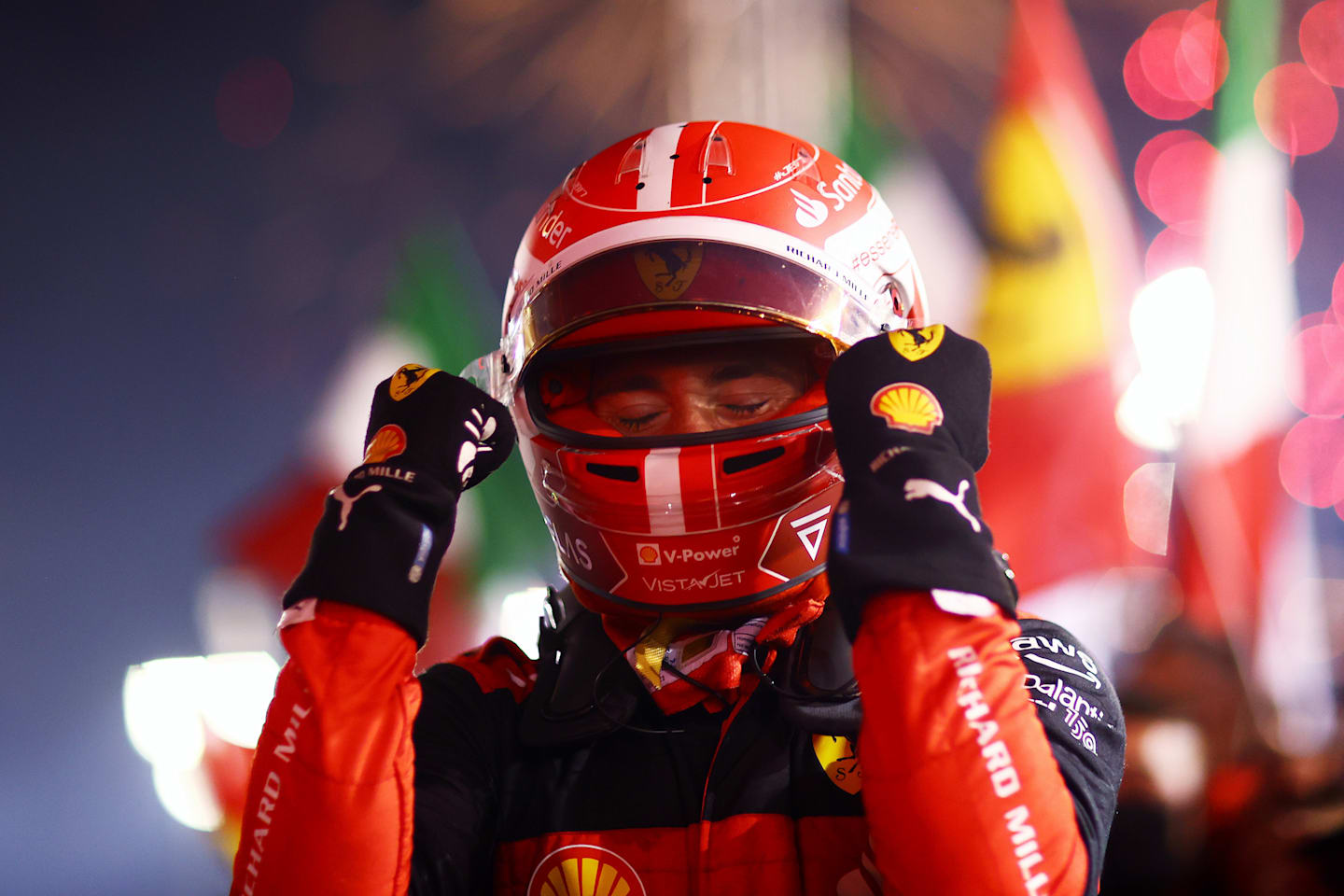
Charles Leclerc's 2022 Bahrain Grand Prix victory was a glorious moment for the team
8. Apotheosis of the Sharknose – 1961 Belgian Grand Prix
Ferrari capitalised on F1’s regulations switching from 2.5-litre to 1.5-litre capacity engines by producing comfortably the strongest powerplants at the start of the new formula. Amid political wranglings and the short-lived creation of a breakaway ‘Intercontinental Formula’ by the British teams, the Ferrari 156 – better known as the ‘Sharknose’ owing to its distinctive air intake ‘nostrils’ on the nose – dominated.
Stirling Moss won the season-opening Monaco Grand Prix, but was pushed hard by Richie Ginther in the lead of a trio of Sharknoses. A one-two for Wolfgang von Trips and Phil Hill followed at Zandvoort, but it was at the daunting Spa circuit for the Belgian Grand Prix that the Sharknose had its greatest day.
The car proved crushingly dominant at the power-dependent circuit, with only BRM driver Graham Hill briefly spoiling the party by taking the lead, only to be passed by Phil Hill before the end of the first lap. A remarkable Ferrari one-two-three-four followed for Phil Hill, von Trips, Ginther and home hero Olivier Gendebien.
While Ferrari had achieved that feat twice before, those were in the era the world championship was held for F2 machinery, making this a unique moment for Maranello F1 kit.
Sadly, the chassis wasn’t as strong as the engine and after the peak of ’61, Ferrari soon slipped backwards as others made bigger improvements.
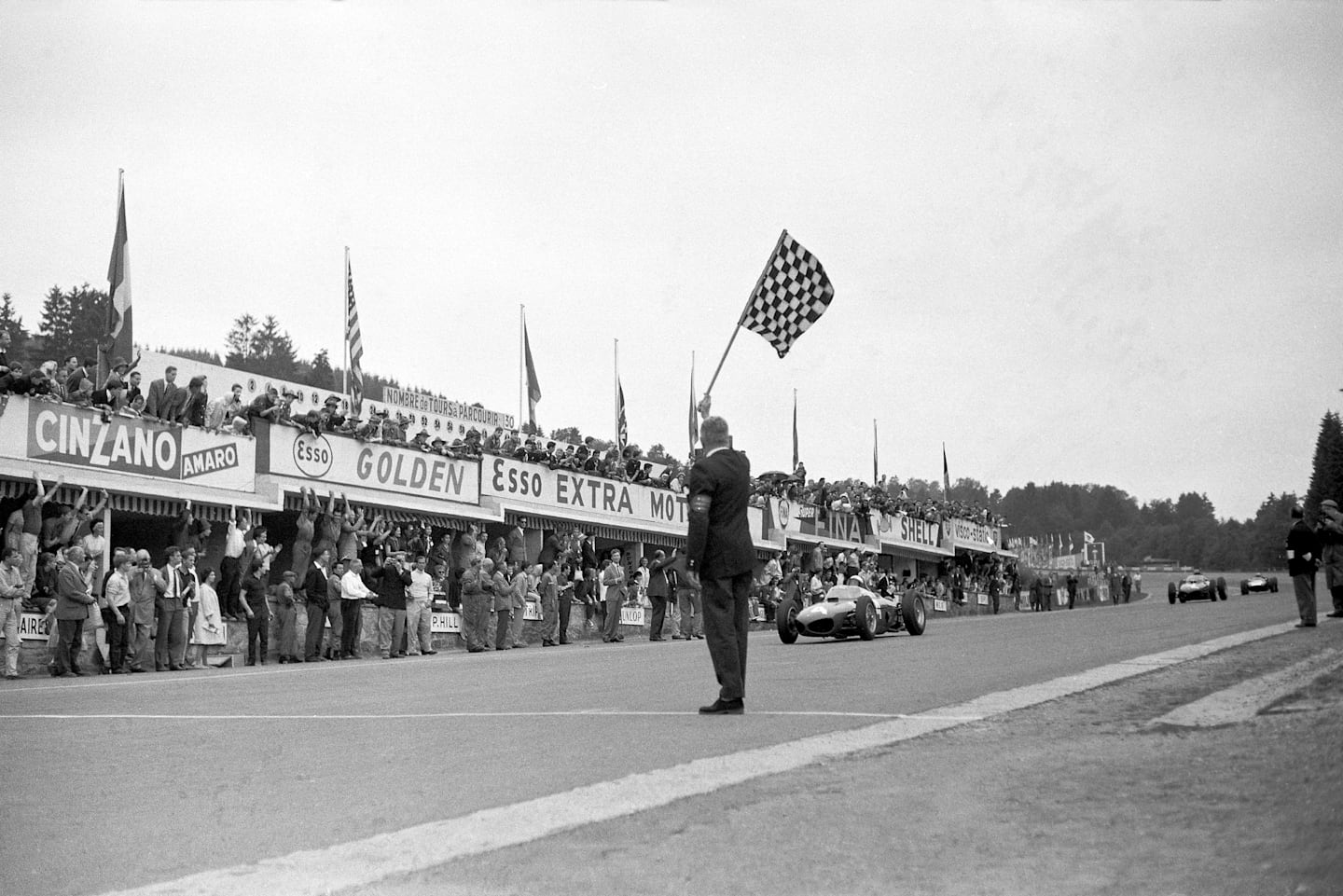
American racing driver Phil Hill takes the chequered flag at the Belgian Grand Prix
7. A victory…and a defeat – 1999 Japanese Grand Prix
The 1999 Japanese Grand Prix is usually remembered for McLaren’s Mika Hakkinen beating Ferrari’s Eddie Irvine to the drivers’ championship. But it was hugely significant given Ferrari sealed the constructors’ crown after enduring 15 seasons without a championship of any kind.
Irvine went into the finale with a four-point advantage over Hakkinen, but had a disappointing run to third place. However, Ferrari had the same advantage in the constructors’ championship, meaning Michael Schumacher – in his second race after returning from the broken leg suffered at Silverstone – taking second place was enough to make sure of that title given the second McLaren of David Coulthard retired.
The importance of this title cannot be underestimated. While there was disappointment, this was confirmation that Ferrari’s revolution under Jean Todt, which started six years earlier, was working. There was still pressure for Schumacher to take a title, but the constructors’ championship success took the edge off that. What’s more, few doubted that Schumacher would have prevailed had he not been injured.
Ferrari was back and the all-conquering years of 2000-2004 followed.
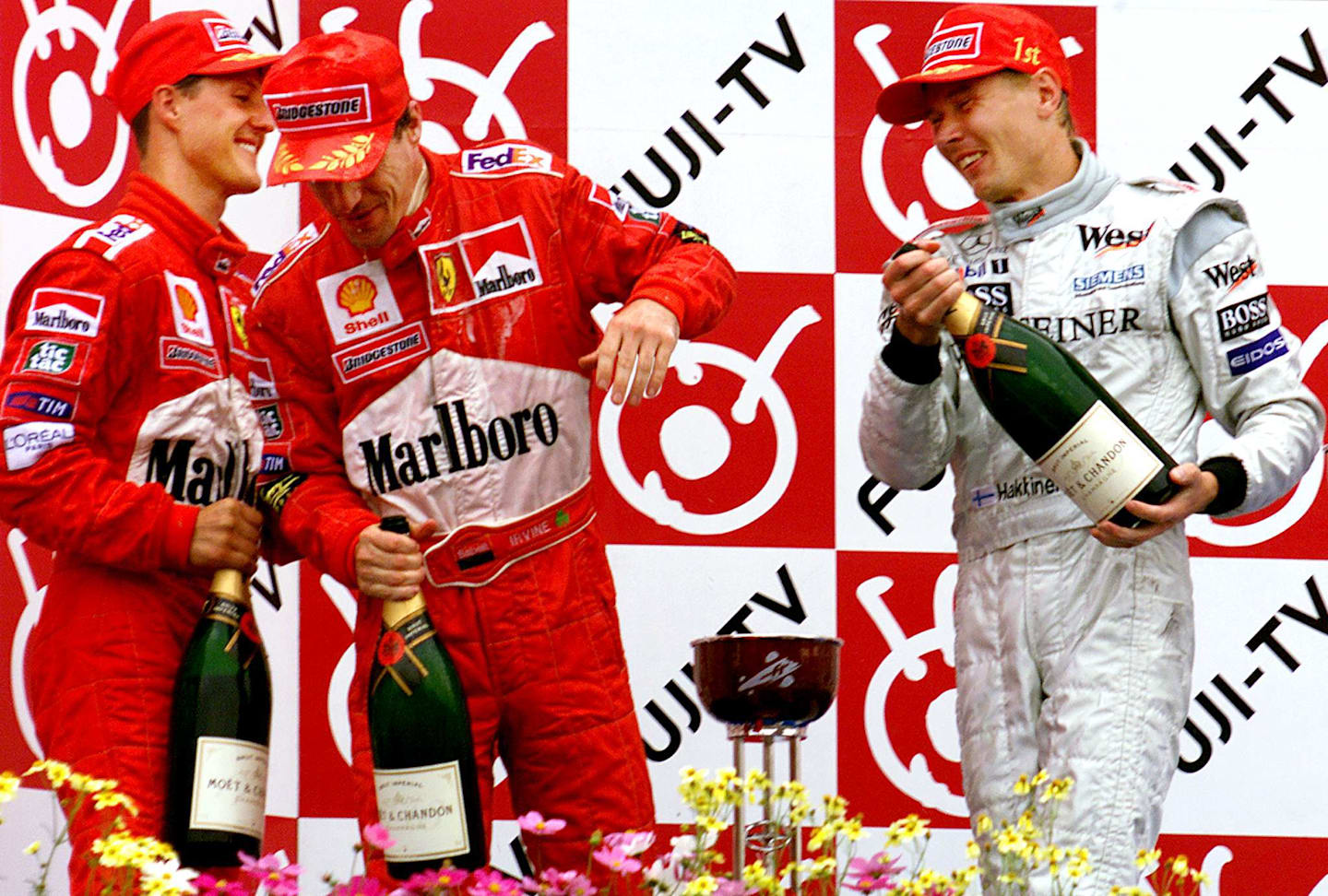
Mika Hakkinen beat Eddie Irvine to the 1999 drivers' title, but Ferrari clinched the constructors
6. Lauda returns from the dead – 1976 Italian Grand Prix
On 1 August 1976, there were doubts about whether Niki Lauda would survive let alone race again. His horrific, life-threatening crash in the German Grand Prix on the fearsome Nurburgring had surely cost him the world championship. Or had it?
Astonishingly, six weeks later Lauda returned to contest the Italian Grand Prix. Through sheer bloody-minded determination and the assistance of fitness specialist Willi Dungl, he produced probably the most heroic Ferrari drive ever seen at Monza by finishing fourth.
He’d made a point to the watching world and even his own team, who he felt hadn’t supported him enough by being so quick to sign Carlos Reutemann from Brabham as his replacement.
Lauda’s achievement required astonishing determination. The burns on his face weren’t healed so the mere act of donning and removing his helmet was agonising. His eyelids were still damaged and on the first day of practice he struggled. But come the second day of running he was closer to the Lauda of old and proved those who doubted him wrong.
By finishing fourth just six weeks after being given the last rites, Lauda can be said to have been the only F1 driver to come back from the dead to fight for a world championship. And the tifosi loved him for it.
Top 10: Moments of Niki Lauda Brilliance
5. The breakthrough win – 1951 British Grand Prix
Ferrari had won races for F1 cars before, but it wasn’t until its ninth appearance since the inauguration of the world championship that it took the first of what now stands at 245 victories. It came from an unexpected source.
Alberto Ascari was Ferrari team leader, but it was Jose Froilan Gonzalez who stunned with his speed, breaking the lap record on his way to the marque’s first world championship pole position despite running the older 12-valve version of the V12 engine.
This was only Gonzalez’s second outing for Ferrari, having grabbed Enzo’s attention by beating the returning Mercedes W154s in the Buenos Aires Grand Prix in February driving the little-known Ferrari 166 FL. On debut, at Reims, he’d been called in to hand his car over to Ascari and it seemed the same would happen at Silverstone.
Gonzalez took the lead from Alfa Romeo’s Juan Manuel Fangio, on his way to a first world championship, on lap 39 and was well on his way to victory when Ascari’s Ferrari 375 suffered a gearbox failure. Ascari was offered his car, but rejected it on the basis Gonzalez had driven so well.
It was one of only two wins for Gonzalez at this level, the other coming at Silverstone in 1954. The high-speed airfield circuit proved ideal for this very physical driver’s strengths – he was not nicknamed ‘El Cabezón’, or ‘fat head’, by his home fans for nothing.
By taking Ferrari’s landmark victory, the Argentinian established himself as a foundational figure in the Scuderia’s story.
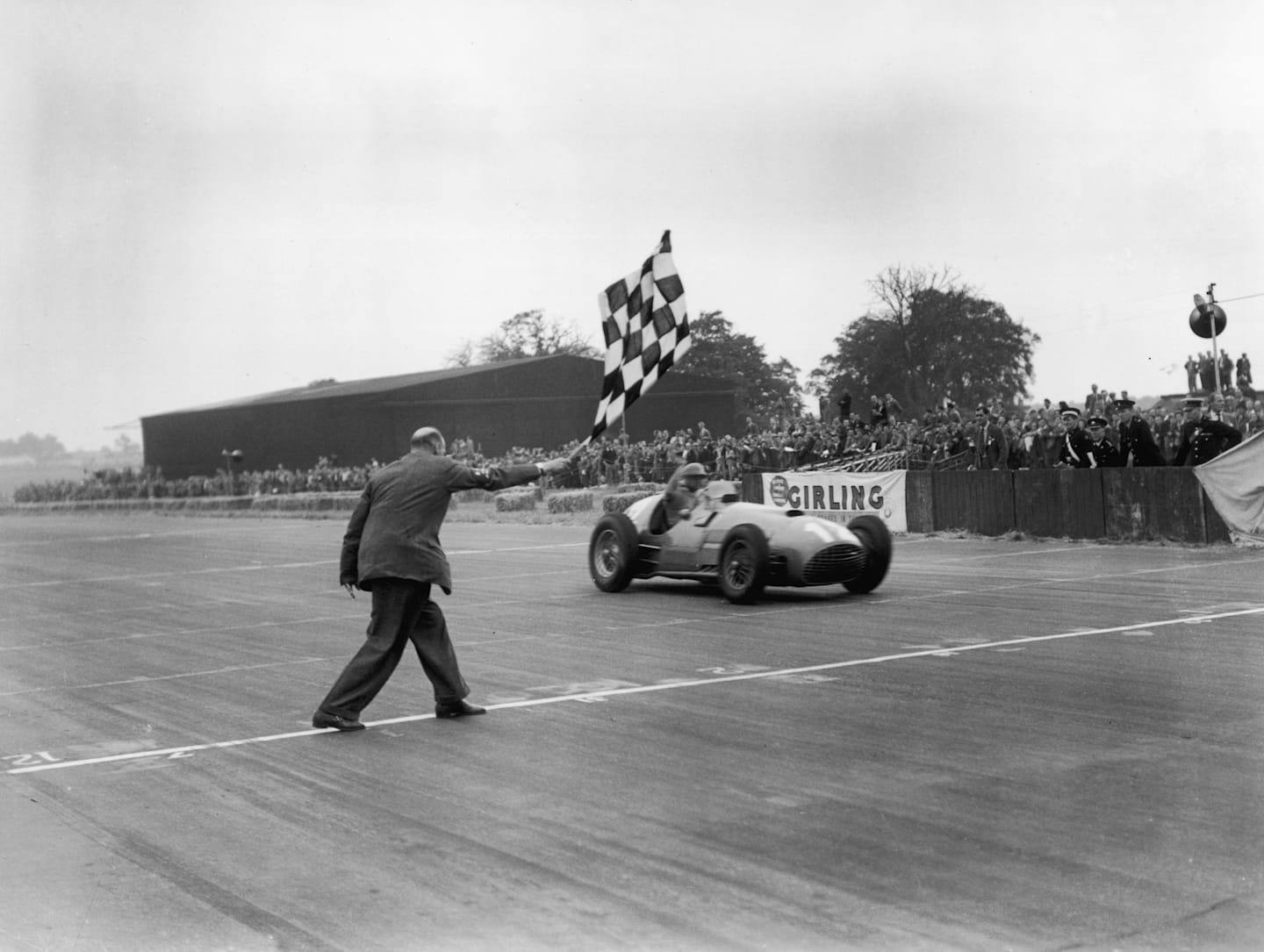
Jose Froilan Gonzalez took a stunning victory in the 1951 British Grand Prix
4. Villeneuve’s unlikeliest win – 1981 Spanish Grand Prix
There are numerous candidates for the greatest single Ferrari win, but Gilles Villeneuve’s status as a Ferrari hero and the astonishing improbability of him holding back the tide to triumph at Jarama in 1981 makes this perhaps the most astonishing of all.
Villeneuve qualified only seventh, the leading of the turbo runners on a track that favoured handling over power. But he jumped to second behind the Williams machines of Carlos Reutemann and Alan Jones at the start, dispatching the Argentinian at the start of the second lap. Jones pulled away, but when he went off Villeneuve assumed the lead.
He stayed there but never had it easy. The biggest lead he had at any stage was 1.790s over Reutemann shortly after Jones retired, who chased him for much of the race. But he faded late on and Jacques Laffite’s Ligier got up to second place.
Just as Reutemann had done, Laffite got close to pulling off a move, but was never able to make it stick as Villeneuve placed the car well and used the power on the straights to perfection.
At the chequered flag the top five – Villeneuve, Laffite, John Watson’s McLaren, Reutemann and Elio de Angelis’s Lotus were covered by just 1.24s. Villeneuve had taken one of the most unexpected wins ever taken by Ferrari, doing so in a way that shows how reductive his wider reputation as a fast but lairy driver is and that he was capable of drives of immense controlled brilliance given the demands of tyre and fuel management he also had to juggle.
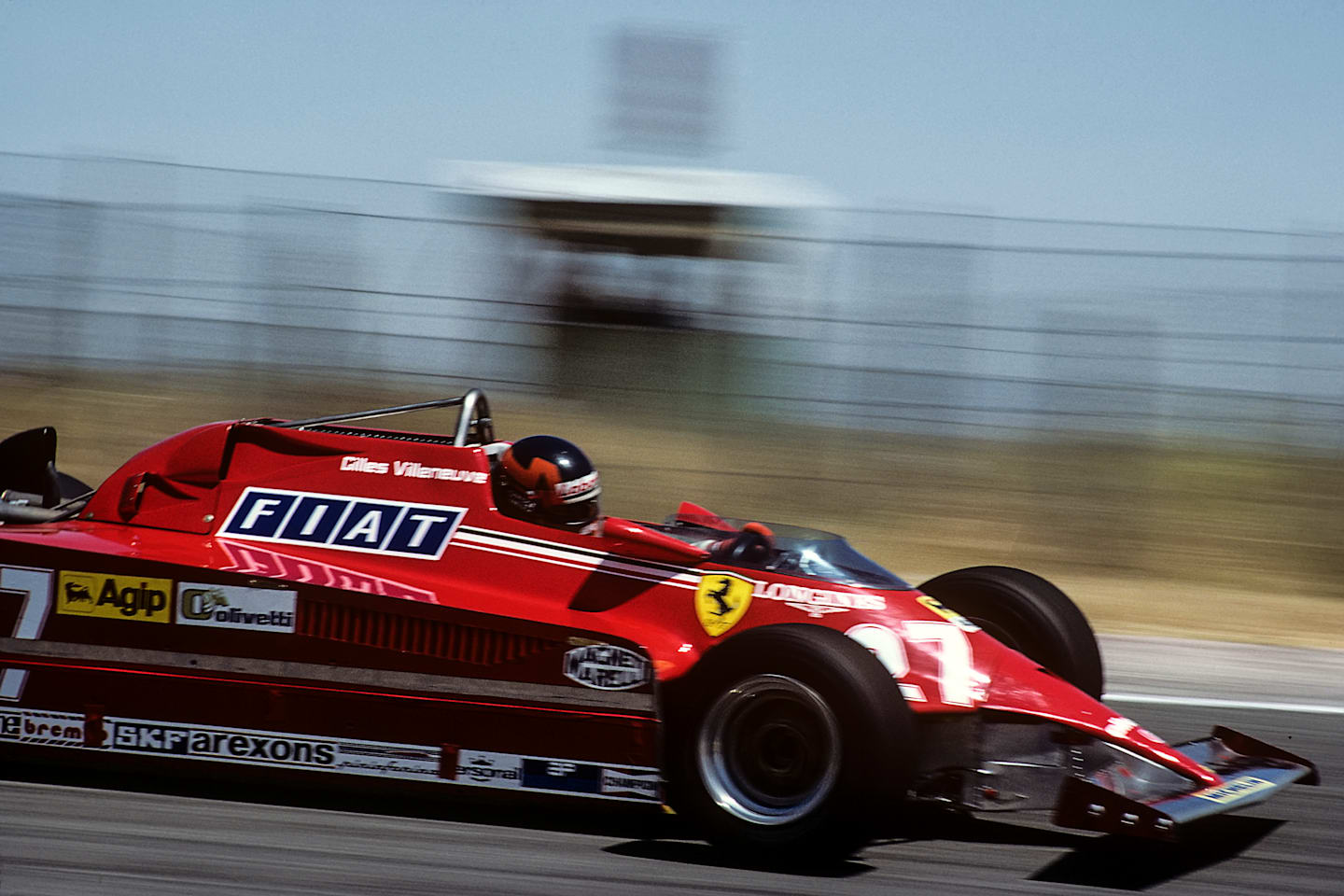
Gilles Villeneuve was lauded for his 1981 Spanish Grand Prix victory
3. Monza’s greatest day – 1982 Italian Grand Prix qualifying
Some called it the greatest day at Monza. Ferrari was on its knees having lost Gilles Villeneuve in May then suffered from Didier Pironi sustaining horrendous leg injuries in a crash at Hockenheim a month before the Italian Grand Prix.
There was only the constructors’ championship left to fight for and after Patrick Tambay had been entered in a solo Ferrari for the Austrian and Swiss Grands Prix – not even starting the latter thanks to a trapped nerve in his back – a second replacement driver for the season was drafted in for Monza – 42-year-old Mario Andretti.
The announcement that the Italian-born, American-naturalised racing legend would race for Ferrari in the final two races to help it seal the title reignited the tifosi’s enthusiasm and led to a flurry of ticket sales. Having raced for the Scuderia in 1971-72, he was loved by the fans and knew the team.
After a test at Fiorano in which he gelled well with the turbocharged Ferrari 126C2, Andretti was a solid sixth in first qualifying but knew there was more pace to be found after failing to put a clean lap together. He proved that on Saturday, going out late on in the second qualifying session and grabbing pole position from Nelson Piquet’s Brabham by just 0.035s. The tifosi have never been more thrilled, or noisy.
Sadly, the race didn’t go so well. Andretti slipped to fourth at the start thanks to wheelspin and hit engine problems in the race on his way to third place. But he’d banked crucial points and gave Ferrari a day to remember.
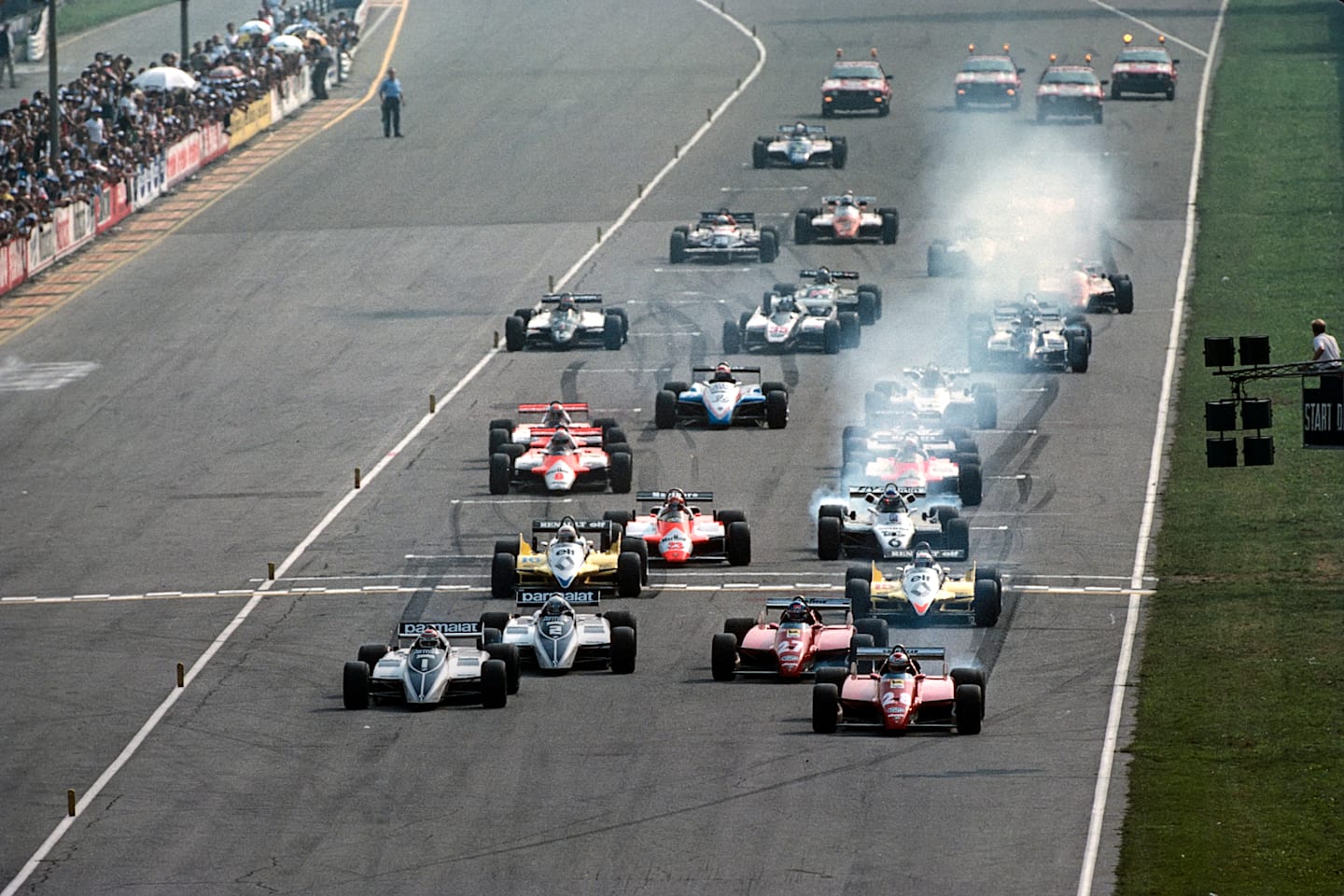
Mario Andretti would start the 1982 Italian Grand Prix from pole after a memorable qualifying
2. Schumacher at last – 2000 Japanese Grand Prix
Success did not come easily for Michael Schumacher at Ferrari, but when he finally won his first world championship in red at the fifth attempt in 2000 it was unquestionably one of the most glorious days in the Scuderia’s history. Sealing a second-consecutive constructors’ title at the same time made it perfect.
And Schumacher won it in style, clinching the title with a race to spare with victory in the 2000 Japanese Grand Prix at Suzuka. It came in a classic duel of the refuelling era with Hakkinen, jumping ahead at the second pitstop and leading the McLaren driver home.
HALL OF FAME: Michael Schumacher
“Looking back, I have to say that this race was something very special for me,” said Schumacher in his ‘Race of My Life’ article in Autosport Magazine. “Not only because it brought me the title, but also because it was such a high-class race. It really was racing at its top level.”
While in retrospect Schumacher’s success with Ferrari seemed inevitable, the long road to the first title meant there had been question marks asked about the whole project. By taking the championship double in 2000, Ferrari ignited its most successful era in F1.
Classic Team Radio: Schumacher wins third world championship at Japan 2000
1. Celebrating Enzo’s life – 1988 Italian Grand Prix
Il Commendatore passed away on 14 August 1988, although his death was not made public until two days later, after his funeral. In a season of utter dominance by the McLaren-Honda MP4/4, it was fitting that the second race after his death produced a shock one-two finish at Monza.
This wasn’t a victory taken on merit. Ayrton Senna led for 49 laps, chased by Alain Prost for 34 of those before he suffered an engine failure. But while Senna outlasted his rival in that battle, he’d used up more of his 150-litre fuel allowance than he would ideally have wanted to. His advantage over Ferrari’s Gerhard Berger peaked at 26.340s at the end of lap 37. For the next 12 laps, Berger closed in at an average of 1.784s per lap to start lap 50 just 4.9s behind.
Senna knew he couldn’t afford to waste any time and perhaps that played a part in his infamous collision with backmarker Jean-Louis Schlesser, making his F1 debut as a stand-in at Williams on the eve of his 40th birthday. Schlesser locked up and went deep, Senna went to the inside – as he should have done – but didn’t make a sufficient allowance for Schlesser needing to get round the corner as well and left insufficient space, eager to avoid losing time. The result was a collision, with Senna booted into a spin and ending up beached on the kerb.
Berger passed the stricken Senna and completed the final two laps to take a famous victory, closely followed by team-mate Michele Alboreto in a fitting tribute to the great Enzo. The tifosi certainly didn’t care that it was an inherited win.
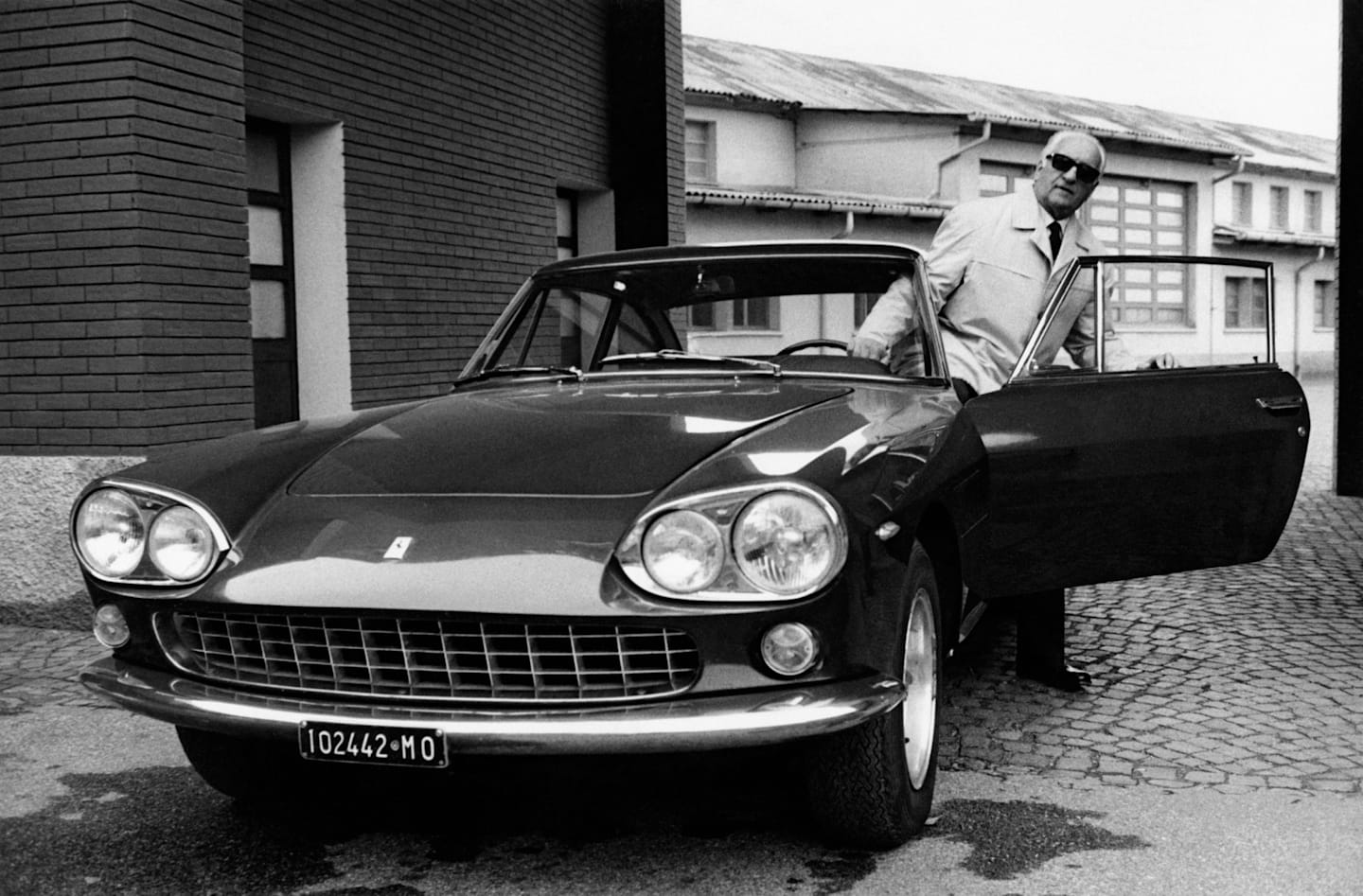
Enzo Ferrari, pictured here in 1966, passed away at the age of 90 in August 1988
YOU MIGHT ALSO LIKE
Feature From record-breakers to underdog winners – 8 drivers who enjoyed success after leaving F1
FeatureF1 Unlocked F1 QUIZ: Spa-Francorchamps special – Test your knowledge of Grand Prix history at the historic Belgian track

Video MUST-SEE: How new Ferrari driver Hamilton’s first day at Maranello unfolded
Report Ismael Fahssi wins opening round of 2025 F1 Sim Racing World Championship for Williams
